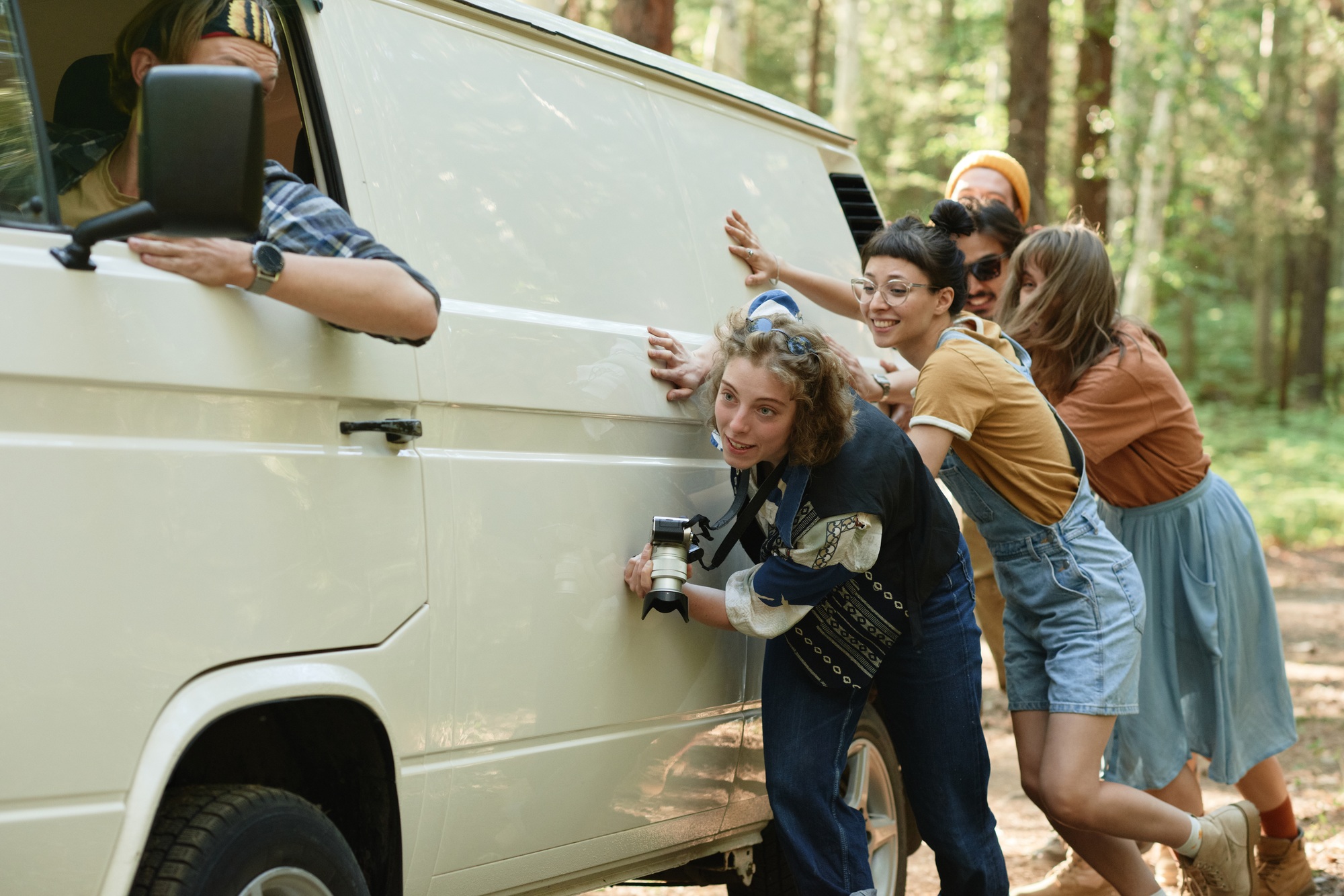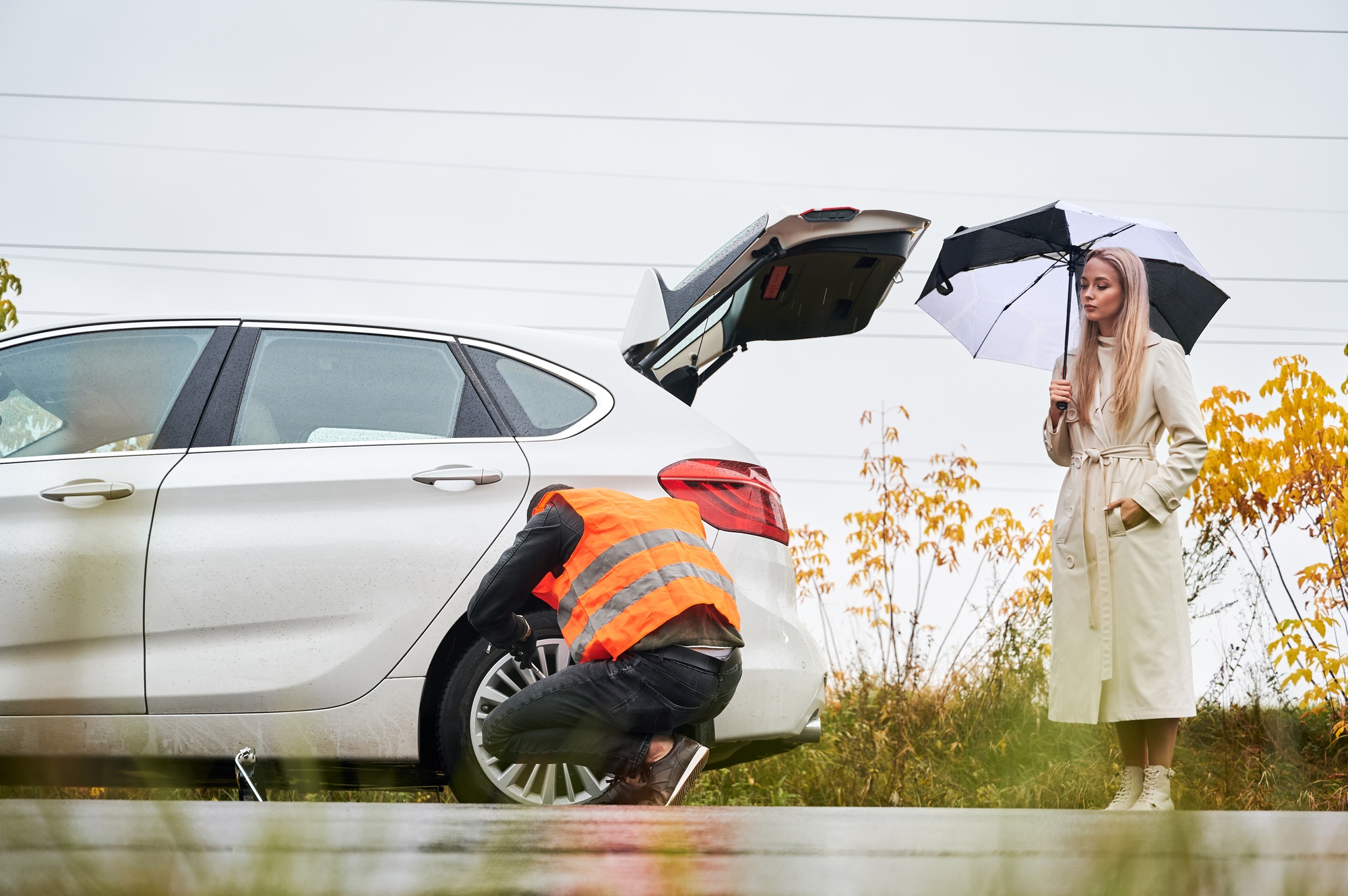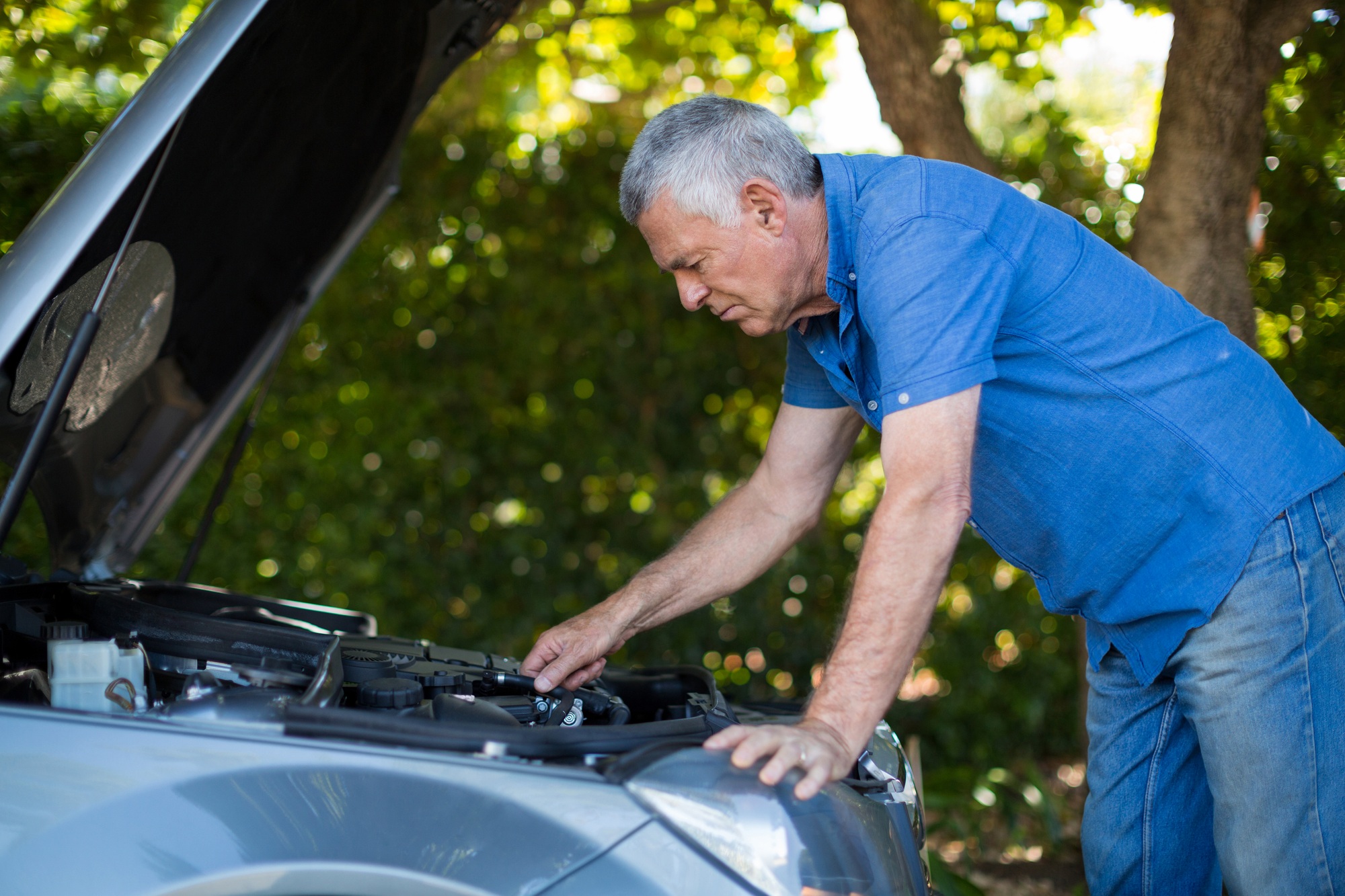A vehicle breakdown can happen to anyone, at any time. Whether you’re on a deserted highway or a busy city street, being stranded can quickly turn into a stressful experience. During such moments, knowing the best practices when waiting for roadside assistance after a breakdown can make all the difference. Your safety, the efficiency of your help, and even the well-being of your passengers depend on the choices you make immediately after your car stalls.
In this guide, we explore expert-backed strategies and safe behaviors that ensure you’re prepared and protected. If you’ve ever been stuck on the side of the road wondering what to do next, this article is designed to help you make the right decisions with confidence and clarity.
Ensure Immediate Safety First

When your vehicle breaks down, your first concern must be safety—both yours and that of others around you. The situation may escalate quickly if you’re not cautious, especially on highways or during poor weather conditions. The moment your vehicle begins showing signs of trouble, turn on your hazard lights. These flashing signals alert other drivers that you’re in distress and help reduce the chances of a collision.
If your car is still moving, try to steer it toward the right shoulder or emergency lane as safely and swiftly as possible. Avoid stopping in curves or areas with limited visibility. Once stopped, activate your parking brake and turn your wheels away from traffic if you’re on an incline. This minimizes the risk of your vehicle rolling unexpectedly.
Exit the vehicle carefully—preferably from the passenger side—and stand at a safe distance from the road. Avoid standing between your car and oncoming traffic. If you’re on a busy highway, staying inside the car with your seatbelt fastened might be safer in some situations.
Key Safety Actions:
- Turn on hazard lights immediately.
- Move to a safe location off the road.
- Use cones or reflective triangles if available.
- Stay visible but at a safe distance.
These precautions create a protective environment around you and your vehicle, making it easier for roadside assistance to find and help you quickly.
Contact a Reliable Roadside Assistance Service

Once you’re safe, the next crucial step is contacting a trustworthy roadside assistance provider. Not all services are equal, and choosing one that responds quickly and communicates clearly is essential. A provider like Crossroads Helpline, for instance, is widely recognized for its fast response times, trained technicians, and commitment to customer care—key qualities you should always look for.
When you call for assistance, be prepared to provide detailed information. Clearly explain your location (use GPS coordinates if possible), the issue you’re facing (flat tire, engine trouble, dead battery), and any visible dangers. This helps dispatchers send the right help and equipment.
While waiting, remain in contact with the service if there are updates or changes. Communication is a vital part of the best practices when waiting for roadside assistance after a breakdown. Services may offer estimated arrival times, vehicle tracker updates, or safety tips during the wait.
Details to Provide to Your Roadside Service:
- Your exact location
- Car make, model, and color
- Type of issue (e.g., won’t start, overheating)
- Whether you’re in a safe area or need urgent support
Selecting a provider with a strong reputation and 24/7 availability ensures you’re not left in a vulnerable position for long.
Make Your Vehicle Easy to Spot

When roadside professionals arrive, they need to locate you quickly. One of the best practices when waiting for roadside assistance after a breakdown is making your vehicle visible, especially at night or in low-light areas.
Reflective materials and emergency warning devices are your best allies. If your vehicle has them, place reflective triangles 10 to 50 feet behind your car. Flares can also alert oncoming traffic. If you don’t have these tools, tie a white cloth to your door handle or antenna, which is a traditional sign of distress.
Keeping your hazard lights on also helps responders and other drivers recognize that you are in trouble. If it’s dark, turn on the vehicle’s interior light to increase visibility.
Visibility Checklist:
- Hazard lights ON
- Reflective triangles placed strategically
- Flares or flashlight visible
- White cloth as a distress signal
Making your presence known isn’t just about being found—it’s about protecting yourself and others on the road.
Stay Calm and Avoid Accepting Help from Strangers
A breakdown can test your patience. But one of the top best practices when waiting for roadside assistance after a breakdown is staying calm and focused. Panicking won’t fix your vehicle or help you think clearly.
It’s common for passersby to offer assistance, and while most people mean well, it’s best to politely decline. Accepting help from strangers can sometimes lead to unsafe situations. Let them know help is on the way, and thank them for their concern. If someone insists or makes you feel unsafe, return to your car, lock the doors, and call the police if needed.
Use the waiting time to check your phone for updates from your roadside service provider, monitor your surroundings, and stay mentally alert. Don’t wander far from your vehicle, especially on unfamiliar roads. Keep your phone charged and conserve battery if needed.
What to Do While Waiting:
- Stay inside the vehicle if it’s safer
- Don’t engage with persistent strangers
- Monitor your phone for service updates
- Keep emergency contacts informed
Staying composed and observant is a powerful step in ensuring your safety and making the wait less stressful.
Keep Essential Emergency Items Handy
Preparation is everything. A well-stocked emergency kit can significantly reduce the discomfort and danger of being stranded. While you can’t predict when a breakdown will happen, you can always be ready for one.
Every vehicle should carry basic emergency items such as water, snacks, a flashlight, extra batteries, jumper cables, a basic toolkit, and a fully charged power bank for your phone. A reflective vest and warm blanket are also must-haves, especially if you’re driving in colder climates.
If you have kids or pets, you’ll need additional supplies. Keep food, medications, and entertainment options handy for long waits.
Here’s a helpful table summarizing key items you should keep in your vehicle:
| Emergency Item | Purpose |
| Flashlight & Batteries | For visibility and signaling at night |
| First Aid Kit | Treat minor injuries during the wait |
| Reflective Vest | Increases visibility when outside your car |
| Jumper Cables | Assist if the issue is a dead battery |
| Blanket & Water | Essential for warmth and hydration |
| Portable Power Bank | Keep your phone alive for updates and help |
| Road Flares/Triangles | Alert drivers and emergency services |
Being prepared adds another layer of security when you’re in a roadside emergency, reducing panic and ensuring comfort.
Keep Your Vehicle Secure and Avoid Unnecessary Engine Use
While it might seem comforting to keep the engine running—especially in extreme weather conditions—this isn’t always the best move. One of the best practices when waiting for roadside assistance after a breakdown is to limit engine use to preserve fuel and avoid additional damage.
If you suspect engine trouble or fluid leaks, running the car could worsen the situation or pose a fire risk. In hot weather, running the air conditioning might seem necessary, but doing so while stationary could lead to overheating, especially in an already malfunctioning vehicle.
Make sure all windows are rolled up if you’re inside the car for safety. Lock your doors and remain alert. Only start the engine periodically if absolutely necessary for heating or cooling, and never leave the engine idling in enclosed areas like garages or under bridges due to carbon monoxide risks.
Engine Safety Reminders:
- Only run the engine briefly if essential
- Monitor temperature and warning lights
- Conserve fuel when waiting longer than expected
- Always ventilate well if running engine temporarily
Taking these precautions not only protects your vehicle but also ensures you don’t cause secondary mechanical issues while waiting for professional help.
Inform Family or Friends About Your Situation
Communication with your roadside assistance is important, but so is letting someone close to you know what’s going on. This is especially vital if you’re traveling alone or in rural areas. One of the best practices when waiting for roadside assistance after a breakdown is to always update someone you trust.
Give them details like your location, the service provider you’re waiting for, and how long you expect to wait. If the service is delayed, or if something unusual occurs, they’ll be your backup support. Having a point of contact who knows your whereabouts can help keep you grounded and provide peace of mind.
Also, many smartphones allow you to share your live location through apps like WhatsApp or Google Maps. This can be an incredibly helpful feature in case of emergencies.
Tips to Keep Loved Ones Informed:
- Send your real-time location
- Provide your car details and breakdown info
- Inform them of your ETA and any updates
- Create a group chat for faster updates if traveling in groups
Remember, communication is not just convenience—it’s an added layer of security.
Stay Updated and Track the Assistance Vehicle
Many modern roadside services offer real-time tracking for their tow trucks or support vehicles. If available, make sure to use this feature. It allows you to stay informed and estimate how much longer you’ll need to wait.
This is part of the best practices when waiting for roadside assistance after a breakdown, as it prevents unnecessary stress. Instead of repeatedly calling the service provider, you can simply track the vehicle’s progress, helping you stay calm and informed.
Additionally, keep an eye on your phone for texts or calls from the assistance team. They may ask for clarification, offer updated arrival times, or share information about your issue before arriving. Respond promptly so there are no delays.
Stay Connected and Informed:
- Use apps or websites that offer live tracking
- Keep phone volume up and notifications on
- Confirm estimated wait time and technician details
Staying in the loop ensures you’re not caught off guard and reduces the unpredictability of the situation.
Learn From the Experience for Future Preparedness
Once your vehicle is towed or repaired and you’re safely back on the road, it’s time to reflect. Use this experience to prepare more effectively for the future. Understanding the best practices when waiting for roadside assistance after a breakdown doesn’t stop once the event ends—it should shape your ongoing habits as a driver.
Was your emergency kit complete? Did your roadside provider respond quickly enough? Would a different service have been faster or more professional? Services like Crossroads Helpline are known for their high customer satisfaction and reliability, which might be worth switching to if your experience was less than ideal.
Also, this is a great time to schedule any overdue maintenance to prevent another unexpected breakdown. Stay proactive: check your battery, tires, oil levels, and other essentials regularly. Having a roadside assistance membership is also worth the investment if you travel frequently.
Post-Breakdown Takeaways:
- Review your emergency preparedness
- Evaluate the roadside service quality
- Upgrade your kit and renew memberships
- Learn how to recognize signs of car trouble earlier
Being proactive can make future incidents shorter, safer, and far less stressful.
Recap: Best Practices When Waiting for Roadside Assistance After a Breakdown
To wrap up, here’s a quick recap of the key best practices when waiting for roadside assistance after a breakdown. Following these strategies helps ensure your safety, reduces stress, and speeds up the recovery process.
Top Best Practices:
- Move to a safe, visible location immediately.
- Turn on hazard lights and use reflective devices.
- Call a reliable roadside assistance provider.
- Share detailed information to speed up help.
- Avoid engaging with strangers.
- Keep emergency supplies readily accessible.
- Conserve fuel and avoid running the engine.
- Notify someone close to you about the situation.
- Use tracking features and stay updated.
- Learn from the event and improve your preparedness.
Breakdowns can be frustrating, but with the right knowledge and preparation, they don’t have to become full-blown emergencies. Practicing these habits ensures you’re always a step ahead in unexpected situations.
Conclusion
When your vehicle breaks down, knowing the best practices when waiting for roadside assistance after a breakdown can mean the difference between panic and peace of mind. Safety, communication, visibility, and preparation form the foundation of smart roadside behavior.
Choosing a dependable service like Crossroads Helpline ensures you’re supported by professionals who understand the urgency and provide fast, reliable help when you need it most. Whether you’re navigating an urban street or stuck on a rural highway, these best practices will help you manage the situation like a pro.
Stay safe. Stay prepared. And remember, it’s not just about the breakdown—it’s about how you handle the wait.

